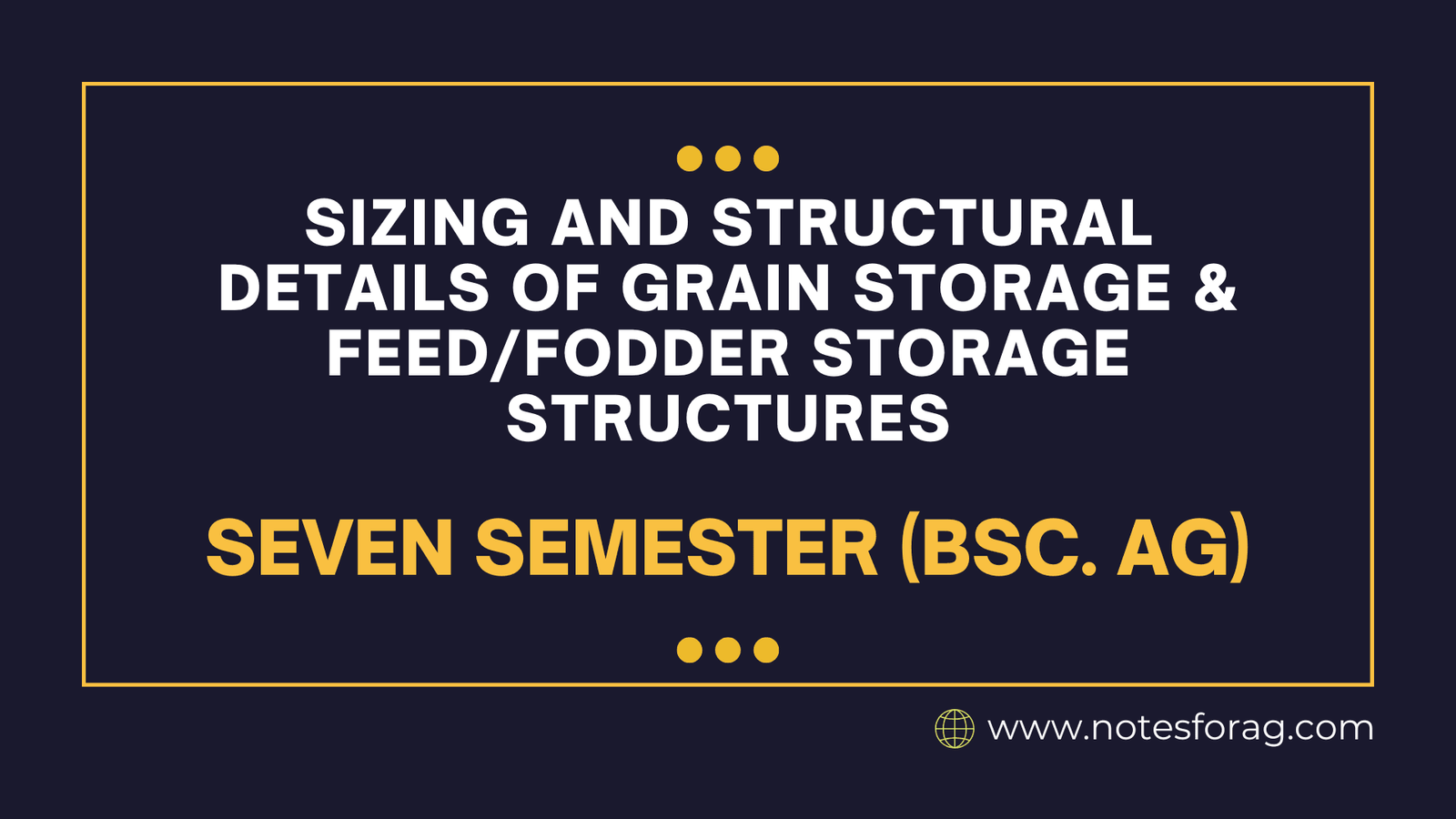Define Grain storage ?
Grain storage refers to the methods and structures used to store harvested grains in a controlled environment, to preserve their quality, prevent spoilage, and ensure they remain safe for future use or sale. Proper grain storage is essential for preventing the loss of grain through factors like pests, moisture, temperature fluctuations, and contamination.
Grain storage plays a critical role in preserving food quality and preventing spoilage. Different storage methods include bag storage, bulk storage, silos, trench pits, and tower silos, each suited to specific needs.
The goal of grain storage is to extend the shelf life of the harvested grains by maintaining optimal conditions that prevent spoilage and protect the grains from external elements like moisture, pests, and temperature extremes. Proper grain storage also allows for the safe handling, processing, and transportation of grains as needed.
Table of Contents
Different Grain storage methods
Bag Storage
Bag storage is the simplest form, where grains are packed into bags and stored in a dry, safe place. It’s common on small farms but is labor-intensive and vulnerable to pests and moisture.
Key Features
Bags should be water-resistant and pest-proof.
Proper air circulation is needed to avoid mold and spoilage.
Grains must be easy to access for monitoring and handling.
Construction
Typically stored in simple sheds or warehouses.
Floors should be waterproof or elevated to avoid moisture from the ground.
Bags are stacked with enough space for airflow.
Bulk Storage
Bulk storage involves keeping large quantities of grain in open or enclosed spaces without individual packaging.
Key Features
Requires a dry, cool, and well-ventilated environment.
Mechanized systems may be used for easy loading and unloading.
Construction
Large warehouses or open sheds with sealed, concrete floors.
Ventilation systems help control temperature and moisture.
Silos
Silos are tall, vertical structures used for large-scale grain storage, typically in commercial settings.
Key Features
Designed for efficient storage and easy loading/unloading.
Must include an aeration system to control moisture and temperature.
Safety features are essential to prevent accidents.
Construction
Made from steel, concrete, or metal.
The base is typically cone-shaped to allow smooth unloading.
Includes ventilation systems for airflow.
Trench Storage
Trench storage involves digging a trench to store grain, often used in rural areas for short-term storage.
Key Features
Trench should be sealed to prevent moisture and pests.
Requires adequate ventilation to prevent mold.
Construction
Trenches are dug 1 meter deep, lined with concrete or waterproof materials.
Covered with protective layers like tarpaulins.
Pit Storage
Pit storage is similar to trench storage but with smaller, shallow pits for short-term storage.
Key Features
Needs to be sealed and ventilated properly to prevent spoilage.
Construction
Pits are 1-2 meters deep, lined with moisture-resistant materials.
Sloped or conical design for easy grain removal.
Tower Silos
Tower silos are tall, vertical structures used for storing large amounts of grain, ideal for industrial-scale storage.
Key Features
High storage capacity.
Mechanized systems for loading and unloading.
Ventilation and temperature control systems are essential.
Construction
Made from steel or reinforced concrete.
Includes a conical base for easy unloading.
Equipped with safety and monitoring systems.
Greenhouses and Polyhouses: Functions and Construction
Greenhouses and polyhouses are structures that create controlled environments for growing crops. They protect plants from weather extremes and can improve crop yields.
Greenhouses
A greenhouse is a structure with transparent walls (glass or plastic) that traps heat and light for plant growth.
Key Features
Materials should allow maximum sunlight to enter.
Must maintain a suitable temperature and humidity.
Proper ventilation is necessary for air circulation.
Construction
Frames are typically made of steel, aluminum, or wood.
Walls and roofs are made from glass, polycarbonate, or plastic.
Ventilation systems like windows or roof vents are used to control temperature and humidity.
Polyhouses
Polyhouses are similar to greenhouses but use UV-resistant plastic for covering, which is cheaper and flexible.
Key Features
Provides good light diffusion, allowing even sunlight distribution.
Requires temperature management, especially in hot weather.
Must have adequate ventilation to prevent overheating.
Construction
Frame made from galvanized iron, PVC pipes, or other durable materials.
Covered with UV-resistant polyethylene plastic.
Side walls are often mesh or netted for airflow, with roof vents for cooling.
Both greenhouses and polyhouses help improve crop production by creating ideal growing conditions. Proper design, materials, and ventilation are crucial for their efficiency and durability, whether for small-scale or commercial farming
Frequently Asked Questions (FAQ)
Can greenhouses or polyhouses be used year-round?
Yes, both greenhouses and polyhouses are designed for year-round use. They provide a stable environment that allows crops to be grown during off-seasons, even in regions with extreme weather conditions.
What is the best method for storing grain long-term?
Silos and bulk storage are generally the best for long-term storage, as they protect grains from pests, moisture, and temperature changes. For smaller quantities, bag storage can work, but it requires careful management to prevent spoilage.
Related Articles

